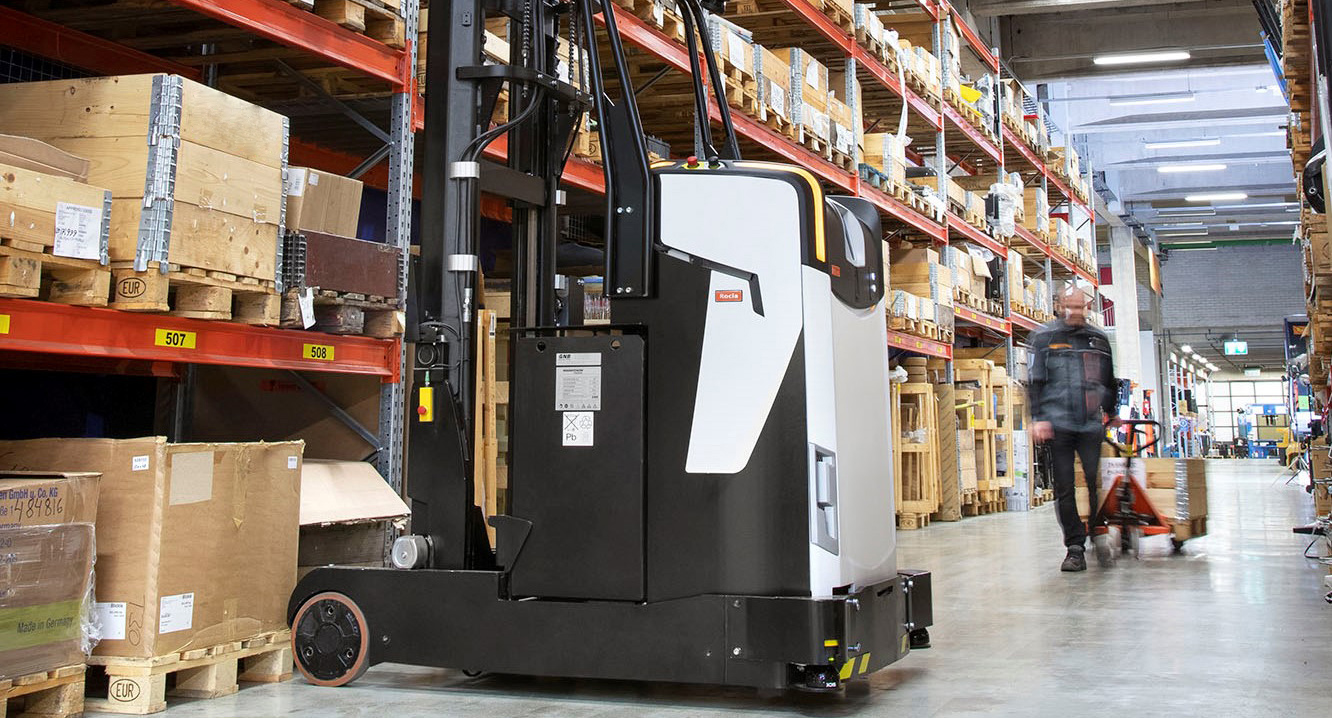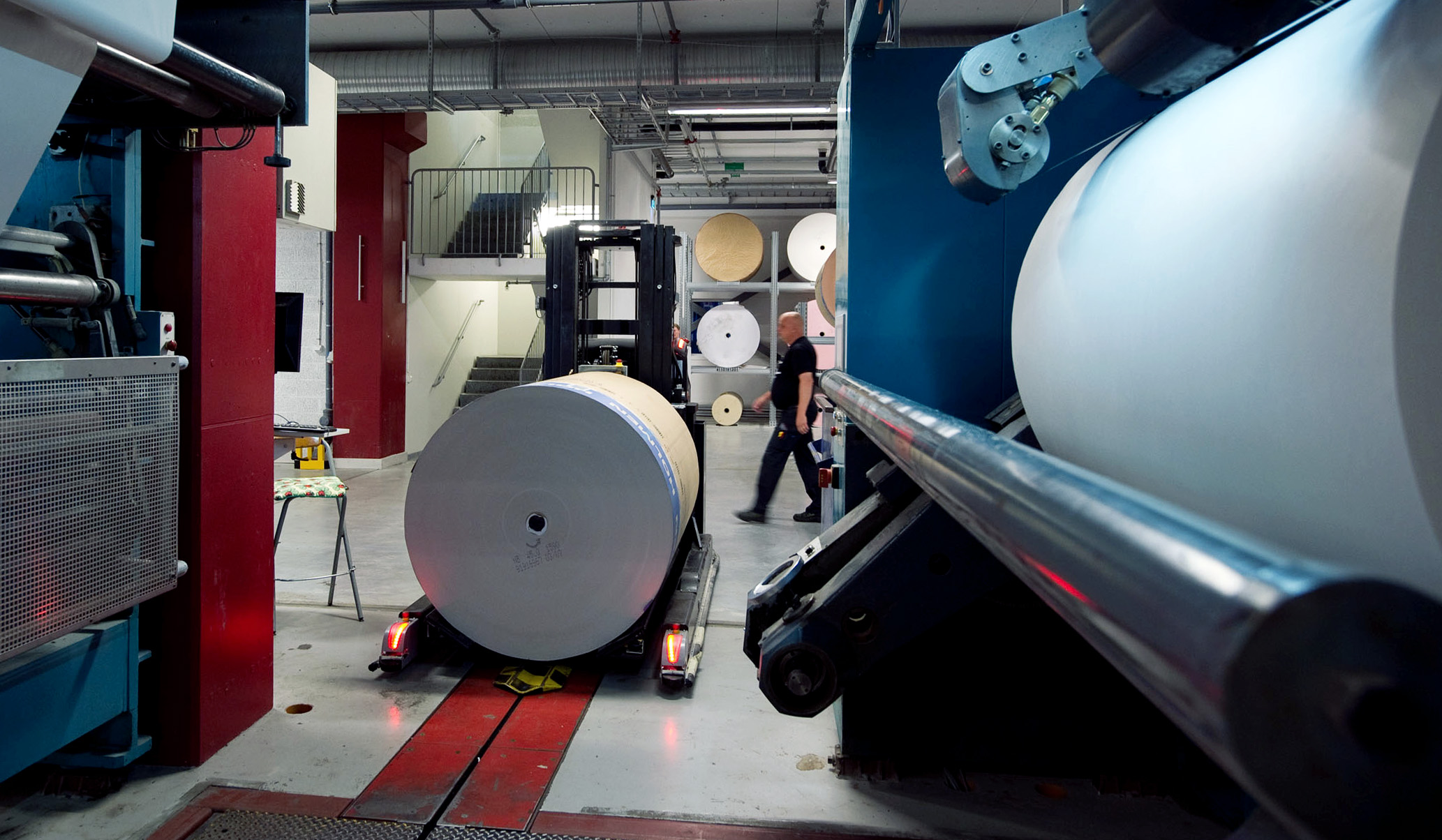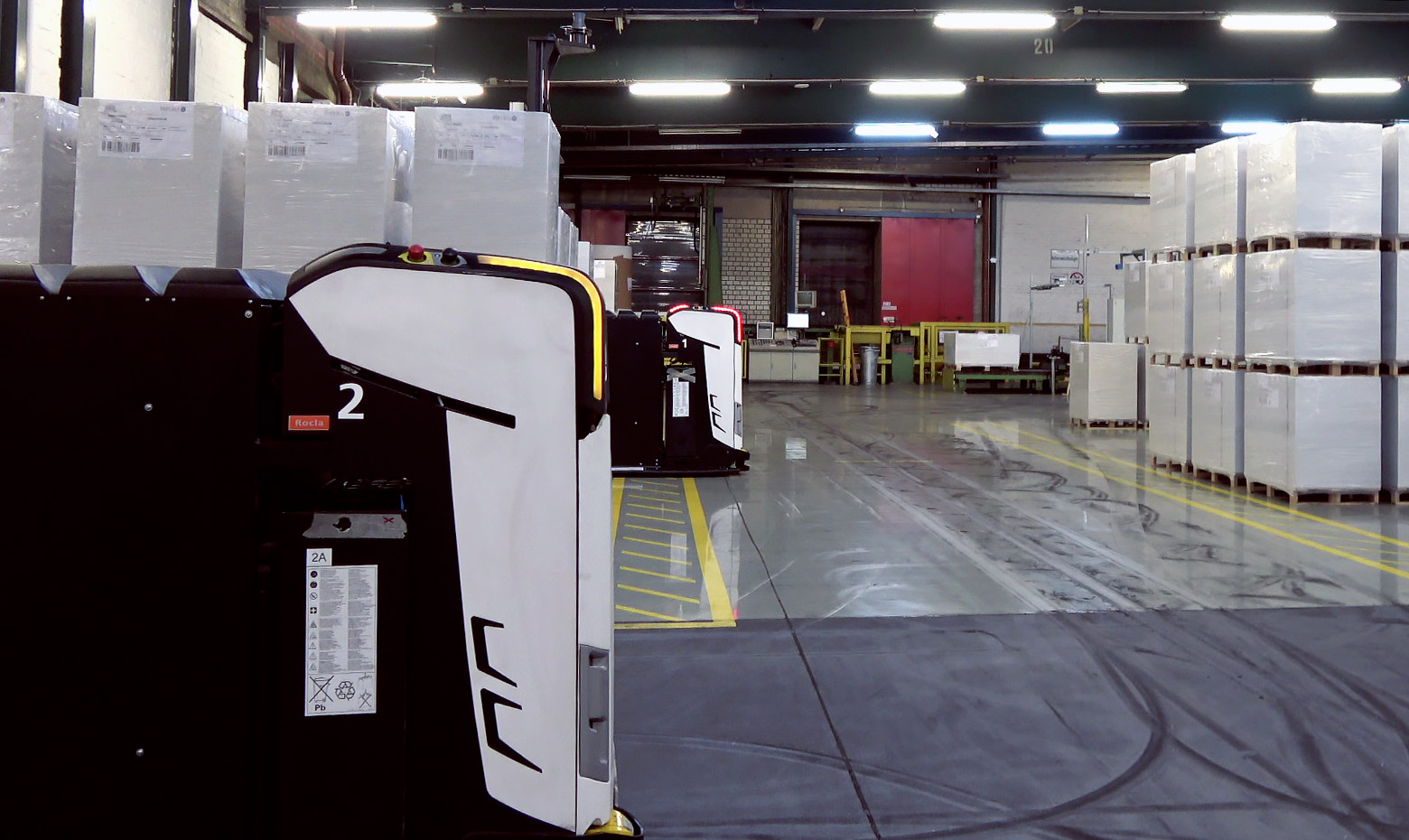Automated logistics and humans in harmony: choosing the right AGV solution for your needs
Automated guided vehicles (AGVs) are part of an automation solution for logistics facilities that can cut costs, increase safety and enhance material flow. Mitsubishi Logisnext has delivered Rocla-branded AGV solutions to many different sectors worldwide with great success. However, not all logistics environments can or should be automated. This article discusses a number of scenarios in which total automation of logistics is not rational. Instead, we suggest the optimal automation approach, in which humans and AGVs work alongside to achieve the best logistics result.

Loading and unloading
Loading and unloading of lorries in loading bays is usually too challenging for AGVs to perform alone. The structure of the AGVs presents a number of problems: the low clearance and small wheel size make driving over the loading dock ramp difficult, if not impossible. In addition, the small tolerances inside of the lorry or trailer and the need to stack pallets in the lorry make this a tough environment for AGVs. While loading and unloading of lorries by AGVs is a function that customers commonly request, there are very limited cases where it would be feasible to automate. However, manually operated forklifts can perform this task much faster, and AGVs can then safely and efficiently transport the goods throughout the rest of the facility. This is a good example of the mixed fleet approach.
Fluctuating workflows
As they are part of an automated solution, AGVs are at their best in repetitive workflows. By contrast, there are many common logistics settings which do not suit AGVs. These include fluctuating peaks and troughs, tight spaces, and goods stacked in differing ways depending on the season. An AGV requires certain tolerances, such as gaps between stacks, meaning there is a limit to how densely it can stack pallets. Manual forklifts, by contrast, can stack pallets more tightly. By taking the mixed fleet approach at your logistics facility, you can reap the benefits of automation of repetitive workflows and remain agile and efficient by continuing manual operations in other areas.
Seasonal variations
If your warehouse experiences high seasonal peaks, it would be inefficient to measure your need for an AGV solution against them, as the investment would be unjustifiably large. For example, your facility may need 10 vehicles during most of the year but 30 in the run-up to the Christmas season. In such a case, a more sensible approach would be to automate your warehouse’s base needs outside the high season and use manual forklifts to deal with the temporary seasonal demand. This is how the mixed fleet approach can ensure high material flow all year round.
The mixed fleet approach can ensure high material flow all year round
Varying load sizes
AGVs are an efficient solution for the constant handling of standard-sized loads, which they transport reliably without fail and fatigue. However, if your facility handles loads of varying sizes, programming the AGVs to handle all possible load sizes, might not be worthwhile. This is for a number of reasons. AGVs and its safety fields and travel routes, needs to be designed according to maximum load size and weight. A larger load might mean more counterweight, wider and longer vehicle needing more space in the layout. In the cases where majority of the loads are more standard and there are only minority of outsized loads, the smarter solution is to program the AGVs to handle standard loads and use manual trucks for the outsized ones, allowing human intelligence to nimbly tackle the situations the automated vehicles are unable to.
Order picking
There are many different order picking methods. If we consider common types of picking in the warehouse, picking by an AGV may not be the most efficient method. In the case of high-level order picking, it may not even be possible to handle with an AGV. This is another example of when mixed fleet operation with manual low-level or high-level order pickers with AGVs can be the most feasible. While picking is done still manually, AGVs can handle replenishment of picking locations and/or full pallet transportation from picking area to the wrapping and shipping area. Full pallet picking and “goods-to-person” type of picking are more suitable for AGVs.
We hope you have found this discussion of the mixed fleet approach useful. Please do not hesitate to get in touch if we can answer any more of your questions.
Want to know more? Contact us!
Lead Form
"*" indicates required fields


